Camera
"And te tide and te time þat tu iboren were, schal beon iblescet."
This phrase is from the ancient English scriptures and is believed to be adopted from earlier references. In modern English this phrase goes like “Time and Tide wait for no man”. The idiom suggests that since ancient times, men have been upset over the lack of control on certain aspects of nature. - The biggest one being TIME. –
Haven’t we all been in moments when the scene in front of our eyes is so magnificent that we wish we could freeze time and enjoy the moment to our heart’s content?
Even our ancestors must have felt the same. Like us, they too must have been awed by the sights of sunsets and landscapes, of creatures that fascinated them; the sight of their families secure and ecstatic, of their children laughing as they play. Our mind stores these moments as memories and relishes them by recalling time as and when we like.
But the true pleasure is in reminiscing and not remembering. The conjunction of “alone I smile, together we laugh” and “a picture tells a thousand words” best describes the invention of – CAMERA
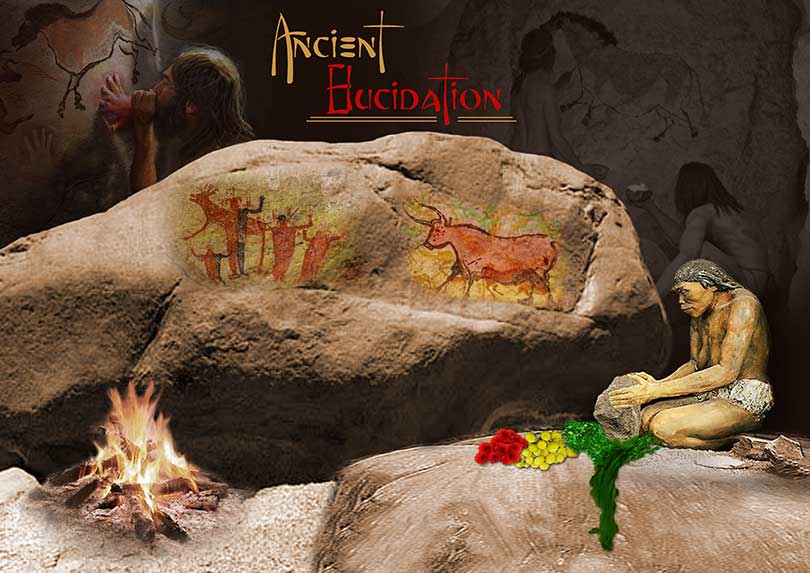
- Dating back about 40,000 years, paintings and illustrations are found in caves at various places around the world; describing what the early man thought of and saw or heard. Cavemen utilized all they found at hand to express themselves and share these memories. They invented the art of painting using fruits and other natural objects as their colour pallet and the walls of their abode as the canvas.
- These paintings were stub and stick figures, but as centuries passed, the paintings improved and the art reformed from Stone Age’s charcoal stick figures to coloured paintings of the 16th Century.
- By now artists had achieved immense control over the art as proportions, anatomy, and such aspects were known and taught to aspiring visual artists. Paintings were drawn with great precision and would appear as near-perfect replicas of the subjects.
- But the artists had made it their goal to create the exact copy and not just near-perfect reproductions. Even after rigorous attempts, the paintings remained life-like, but lifeless.
- To their relief, a new path unfolded when the Italian scholar – Giambattista della Porta suggested the use of a device for viewing the three dimensional world in a 2D format. The device was called...
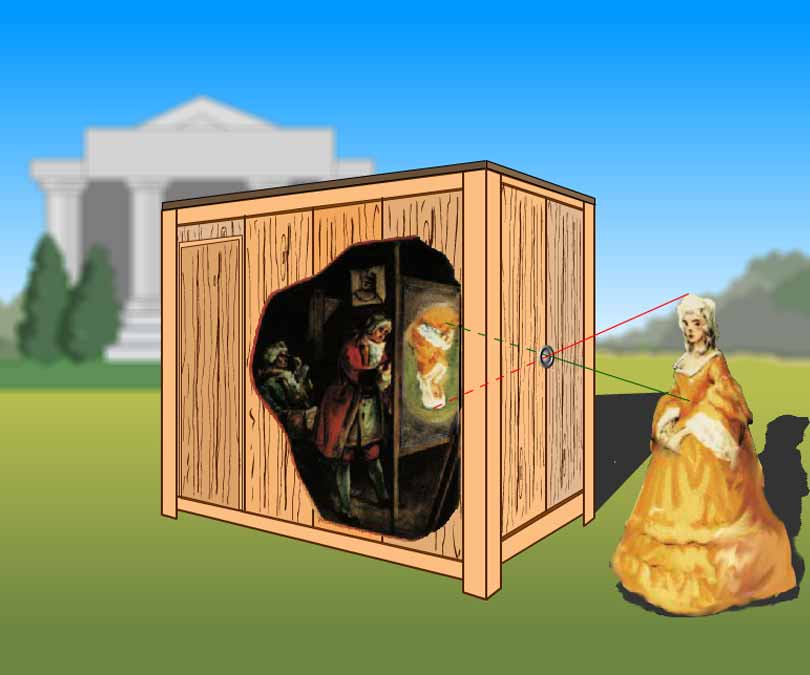
- The camera obscura was a constructed device which enabled people to see an image on a screen. The functioning of the device was based on a phenomenon that occurs as light reflects from objects and passes through a minuscule opening to fall on a surface on the other side. This process creates an inverted image of the object in view.
- Although the enigma was witnessed by many including Mo-Ti (Mozi) and Aristotle, it wasn’t completely understood until a Muslim scholar named Ibn al-Haytham (Alhazen) deciphered the mystery around 1000AD in his Treatise on Light.
- To prove his theory, he constructed a small chamber called the “treasure room” which only had a door for an observer to enter and a tiny hole in the wall for the light to pass through.
- The light projects the object’s image on a screen placed opposing the punctured wall. The sight was astounding! Thenceforth many such chambers were constructed to behold the spectacular view.
- These special chambers were used by astronomers and philosophers for hundreds of years. It was only in the late 1500s that its use for drawing and painting was suggested by Giambattista della Porta.
- It was also through Porta’s texts we learn, that the pin hole was replaced by a concave glass called the lens which refracted the light passing through, to produce a better and sharper image. Such glasses had been produced since ancient times, making it difficult to judge when and who incorporated the lens into the chamber design.
- The name camera obscura was tagged to the invention in 1604 by the German astronomer Johannes Kepler, as he introduced the words ‘Chamber, Dark’ from Latin to English. The simplicity of the camera appealed to the masses and the invention was hereafter referred to as the Camera Obscura.
- Once artists found the value of the camera obscura as an aid to painting, it developed at a greater pace. Soon its shortcomings were overcome by additions and modifications.
- By the mid-17th century, the Camera Obscura was reduced from an immobile room to a portable pair of small boxes which were available in several variations depending upon the lens used. It was also learnt that the smaller the hole, sharper will be the images projected on the screen.
- The magnification of images was also controlled by the use of different lenses, thereby overcoming the limitation of mandatory gap between the camera and the matter.
- In the meantime lenses got more sophisticated, from a single piece of glass to a series of refractory glasses clubbed together for better image enhancement.
- Necessary focusing techniques were developed by adjusting the distance between the lens box and the screen box. The use of glass (ground glass) instead of opaque materials enabled artists to trace the image exactly as it was projected.
- The problem of inverted images was also solved using particular lenses and a set of mirrors by an unknown inventor in 1670s. With these improvements, the camera obscura solved almost all the problems faced by its users at the time; until Johann Zahn came along.

- Johann Zahn came up with a revolutionary idea that would change the way the world painted. He envisioned a Camera obscura that could practically capture and retain the image seen on the screen onto some sort of a medium.
- He pursued this endeavour but the lack of complimentary knowledge concluded his efforts in 1685 with the detailed illustration of a 23 inches long, portable mirror-reflex Camera obscura. With it he could enlarge, focus and screen the image but still could not retain it.
- What it lacked was a medium on which the image could be printed. This knowledge or a part of it was learned by Johann Heinrich Schulze in 1725. The German chemist made the landmark discovery, that it was not heat but the light that darkened silver nitrate.
- All of these developments were a small thing in the big world but together it would be an invention that would defy nature’s most persistent power of time. All that was required was combining the aforementioned techniques to create the…Camera!
- The sums of these happenings were learnt by a French inventor named Nicephore Niecpe after he read Johann Zahn’s idea in an article.
- Nicephore initiated his experiments towards the end of the 18th century by replacing the screen with a silver plate coated by light sensitive materials. After testing several materials, Nicephore used silver chloride.
- He experimented by replacing the screen with a silver chloride sensitised paper. He then exposed the camera’s lens towards the window for almost a day.
- A miracle was revealed when Nicephore removed the paper. An image of his workroom’s window was imprinted on the paper creating a sharp black and white picture.
- Sadly, Nicephore’s joy was short lived as once the paper was exposed to light, the remaining silver chloride also turned black. Nicephore realized its cause and soon turned his attention towards fixing it.
- He tried several types of combinations to make the image permanent, and landed up with bitumen – natural asphalt. He applied this tar-like substance on a pewter (mixed metal) plate and achieved success. In 1826 he fixed an image of the view from his workroom window. He named this technique as heliography (sun-drawing).
- This picture of a rooftop and surrounding buildings was the first ever photograph taken in the world. This was a great achievement as it was the first photomechanical reproduction process and Nicephore knew it! So he went to England and displayed his invention but kept its working a secret, which in turn did not bring him much acclamation.
- Nicephore worked on reducing the amount of time it took to print the picture by testing various materials and devices. After exploring several avenues and reaching a dead end, he finally accepted Louis-Jacques-Mandé Daguerre’s offer of partnership in 1829 and the two began a joint effort on improving heliography.
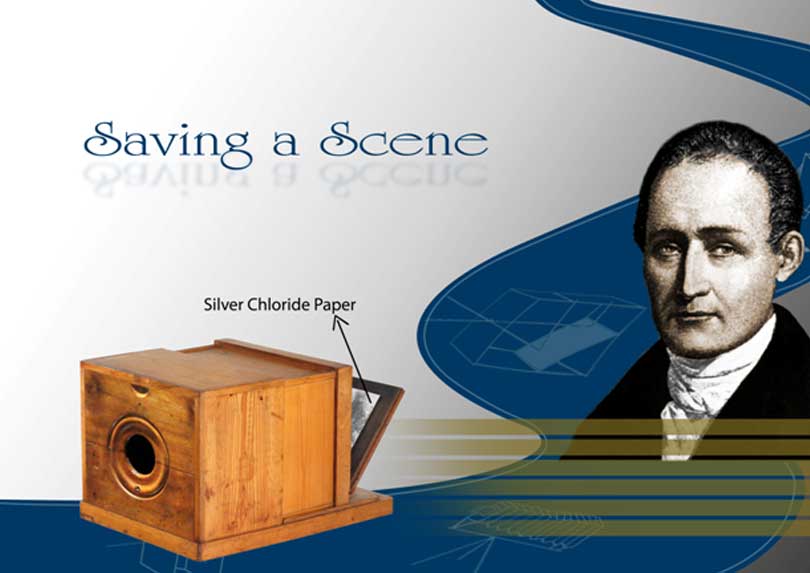
- Louis-Jacques-Mande Daguerre had heard about Nicephore’s idea through Charles Louis Chevalier – the person who had made the lens for Nicephore. Daguerre was intrigued and persistently pestered Nicephore to involve him in the process until he agreed.
- Nicephore died in 1833 but Daguerre built on his knowledge. Three years later he invented a more practical method called as ‘Daguerreotype’.
- Daguerre achieved this by making a silver coated copperplate light sensitive with fumes of iodine vapours. He then placed this plate into the Camera obscura and focused the camera onto a table with items on it by sliding the lens/plate boxes.
- After exposing the plate to bright sunlight for about 10 minutes, Daguerre developed the image using mercury fumes and salt. What he held in his hand was the quickest heliograph taken at that time. He exhibited the heliograph in public in early 1834.
- The photograph was almost black and white with a rare shade of grey. It was so delicate that if it was held by the print, the image would smudge onto the holders thumb making it difficult to preserve the photograph.
- Clearly, there was a lot to be worked upon; however a lot was achieved. Daguerre’s camera also introduced a simple manual shutter which slid across the lens to open and shut the projection. Before this, exposure was recorded by removing the lens cover and putting it back on.
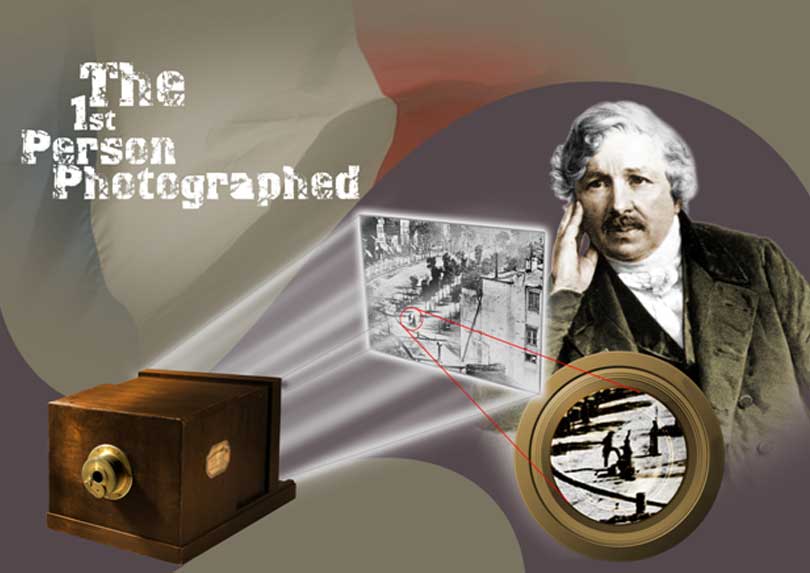
- With this camera, sometime during late 1838, Daguerre took a photograph called the "Boulevard du Temple". This photograph was the first-ever photograph that had a person in it.
- It is said to be of a busy street but as the exposure time was far too much to capture the moving traffic nothing apart from architectural erections is clearly visible.
- Apparently, the only living thing prominently visible is a man standing by a water pump.
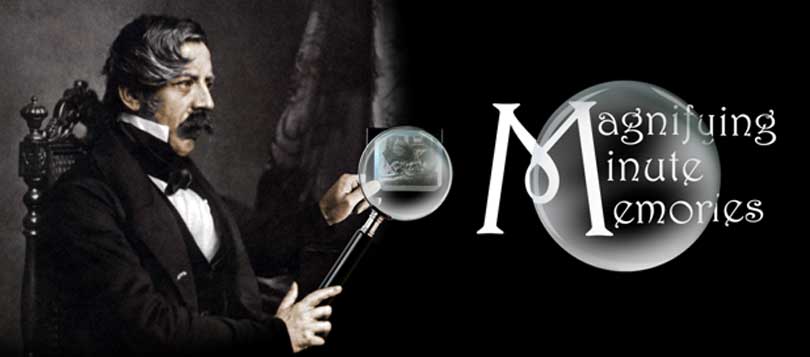
- Nicephore’s vision had finally materialized at the hands of Daguerre, who was now impatient to announce his achievement. On 9th January, 1839, a full description of the daguerreotype process was announced at a meeting of the Academy of Sciences which hosted several international attendees.
- Following the description and demonstration, a few ingenious people pursued its development which resulted in many pioneers.
- One of them was a German physicist named Carl August Von Steinheil. He was present at Daguerre’s exhibition and soon learned how to make one himself. Later that year he made the world’s first miniature camera, which produced pictures that had to be viewed through a magnifying glass.
- The crowd also included L. Ibbetson who used Limelight as a light source for heliographing microscopic objects. Limelight was the first flashlight used to photograph and was lit by heating a ball of quicklime in an oxygen flame.
- But this flash was more like a flare which resulted in high contrasts, leaving room for improvement.
- When Charles Louis Chevalier learnt what Nicephore and Daguerre had done, he used his skills to build the Le Photographe (the Photographer) in 1841. It was the first folding camera which could collapse from a plate-size box camera to the size of a parcel – an outstanding idea.
- That was also the year when the foundation for ‘film’ photography was laid by a British chemical engineer – Henry Fox Talbot. After falsely claiming of inventing the camera independently, Talbot invented the Talbotype process based on the knowledge of many experimental photography pioneers.
- The talbotype or Calotype process introduced the concept of reproducing several copies of the original image in a fashion we know as the ‘negative to positive development’.
- This was done as the Calotype paper was exposed in the camera only long enough to produce a very faint or completely invisible image which was then chemically developed to full visibility. The image was then fixed or made insensitive to light by dipping it into a solution of mixed chemicals.
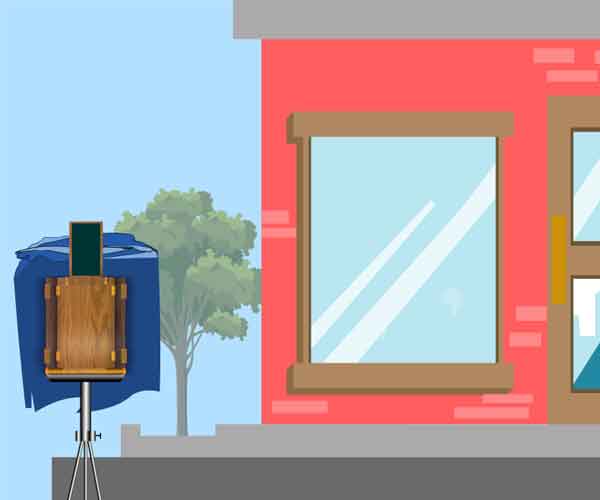
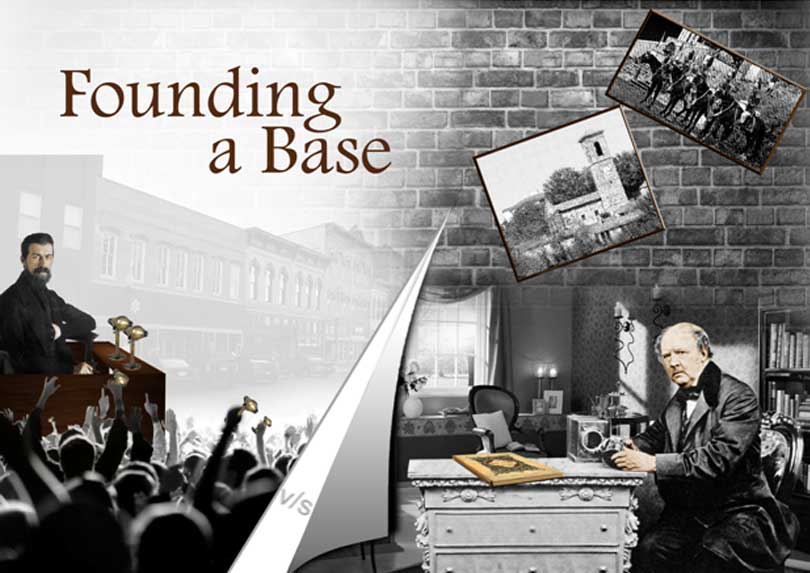
- Accompanying the camera came a few more accessories and inventories. Filters like nets and veils were introduced by Talbot to give photographs an interesting twist.
- These filters produced effects like halftone as the light entering the camera’s lens was altered by the material of the filter placed in front of it.
- The distortion was widely accepted as a new style of photography and was used extensively in the following decades.
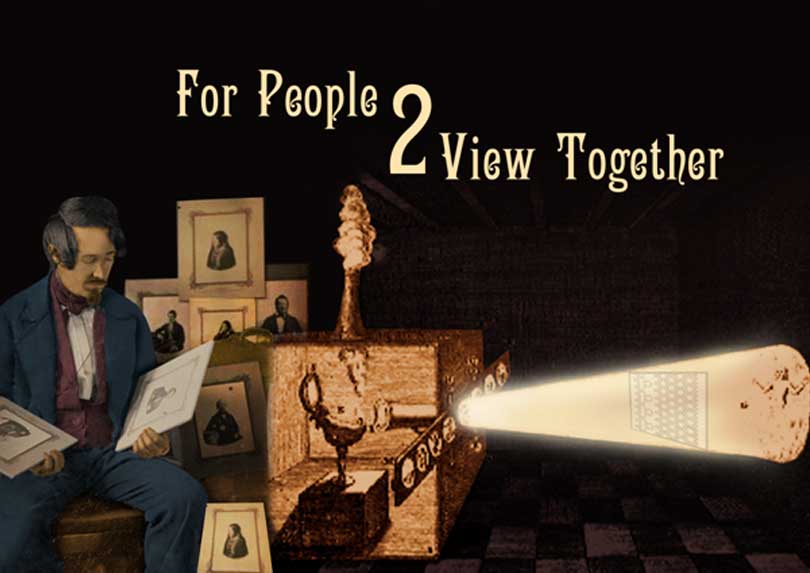
- Another device known as the Magic Lantern was introduced in the 1840s. It was used to project images onto a screen for viewing. The brothers William and Frederick Langenheim tried using the magic lantern of the 1600s as a medium to project daguerreotype images.
- However the opacity of these images forced them to incorporate Talbot’s negative-positive process by imprinting the images on a transparent glass through which the magic lantern’s light could enhance the images.
- The method was a great way to view photographs in public and gave rise to further development of slide projectors.
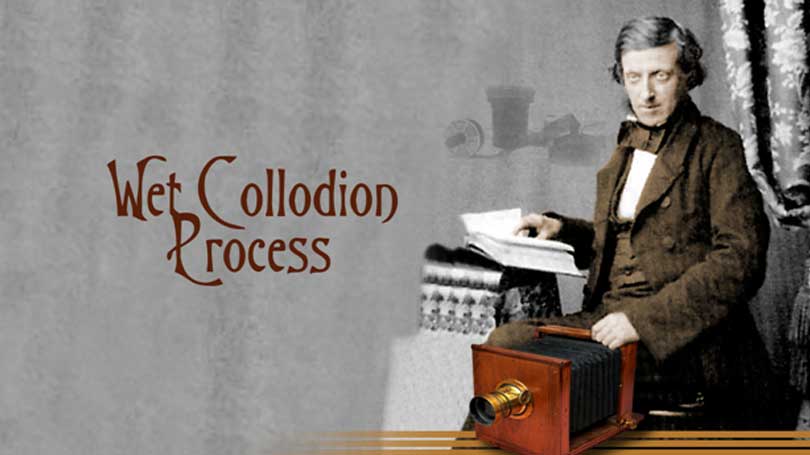
- The rivalry between the two processes was subdued as a British silversmith sculptor Frederick Scott Archer took interest in photography. He started experimenting with the calotype photographic process and in 1851 ended up with a new collecting plate called as the wet collodion plate.
- It derived its name from the elements used in the process and is called the “wet” plate as its photosensitivity is lost once it’s dry. This made it a hassle to use collodion plates as the whole process was to be done immediately after taking the picture. But these limitations were over-looked as people gradually realized that the wet plate offered a much higher quality image. Its pictures were also relatively easier to preserve as compared to the Daguerreotype’s or Calotype’s. The cameras of the time were also fitted with several other add-ons like the bellows made of leather or cloth which folded to allow adjustment of lens for focusing. Its working was similar to the sliding boxes of the camera obscura.
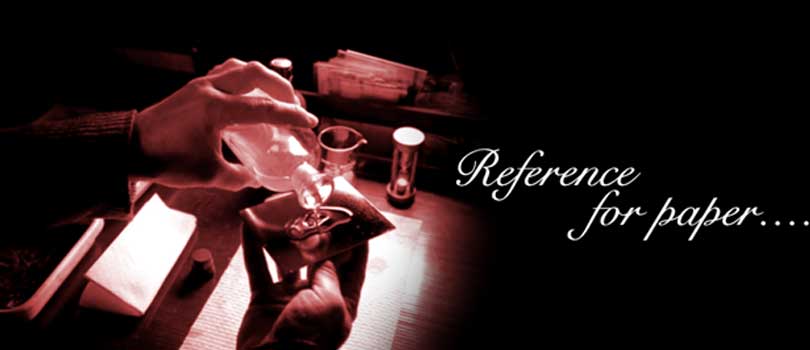
- Proficient painters turned photographers started using the wet plate as their preferred option implying that photography was no longer an experimental art. But the experiments went on as photographers tested new recipes by adding a tad of new elements to the chemicals in the process.
- Gradually, people started preferring Calotypes’ paper photographs over Daguerre’s silver plates. This was mainly because Calotype’s paper photos were much more flexible for applications and storage.
- Paper photographs were cool; it could be pasted in albums, matted and framed like engravings, or tipped into printed books. Whereas this was not possible with the Daguerreotypes’ rigid silver-plate photograph which could only be framed for exhibitions. Thus, the plate photographs were out and paper ones were in.
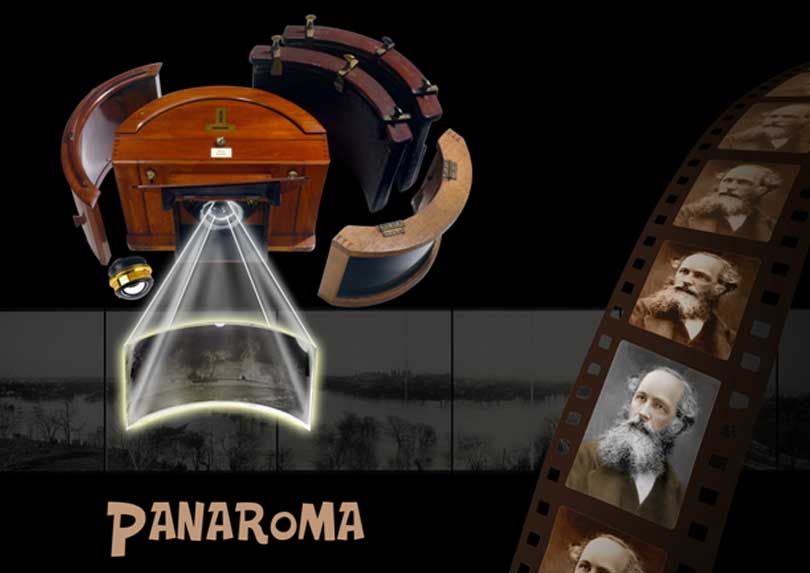
- Another effect that was produced by simply taking several images by rotating the camera to get an elongated view was gaining popularity. Following this trend with acute interest, Thomas Sutton envisioned a camera that could take an elongated picture without rotating the camera.
- In 1859, he invented a camera which achieved a panoramic photograph onto a curved glass plate through a hollow spherical glass filled with distilled water. This gave the camera an angle of 140˚ as against the normal angle of view of 40 to 55 degrees. The camera catered to a niche market.
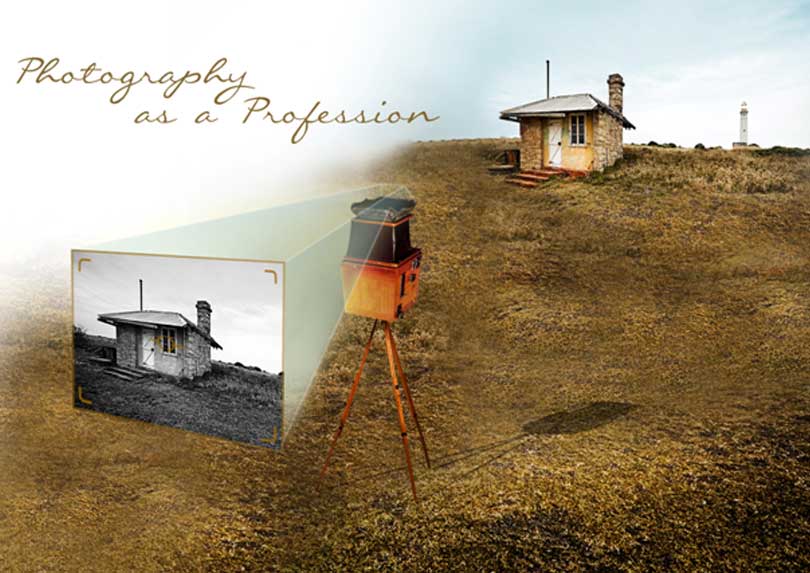
- The difference between a normal camera and a SLR is what makes this invention a milestone in camera history. The normal Cameras had a viewing device called viewfinder through which the photographer could frame the picture.
- But the image seen in the viewfinder was slightly different than the one that is captured, in terms of light intensity and framing.
- In pursuit to fix this, Thomas Sutton had begun to work on what he called a Single-Lens Reflex camera.
- With the single-lens reflex camera, you would get what you saw, unlike the normal camera.
- But the addition of the mirror (Single-Lens Reflex) had a flip side to it. The camera became heavier and would tend to vibrate every time the mirror flipped. Besides, it also made it difficult to use in discretion as the mirror movement made a loud ‘khakk!’ sound. Despite these flaws, the SLR gained considerable fame with photography artists.
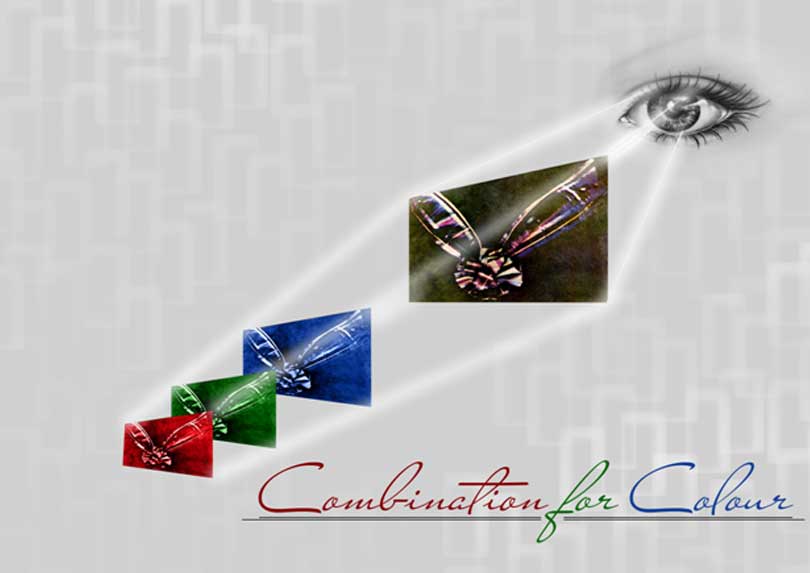
- Photographers were also made aware of a technique to bring out the colours of a picture. This was accomplished by the joint efforts of James Clerk Maxwell and Thomas Sutton in 1861.
- The duo projected a colour picture by merging 3 semi-transparent photographs clicked using red, green and blue filters.
- When these were superimposed and projected together, they displayed the coloured photograph of a tartan ribbon.
- The year 1861 saw the use of the camera for the coverage of a major event for the Americans as the American Civil War broke out. This is said to be the first event that was extensively covered by photographers.
- Hence, apart from its basic applications, its significance in recording history without any tampering was highlighted.
- Photography also grew to be an art and subject of study as a German chemist and professor - Hermann Wilhelm Vogel became the first tutor of photography at the Berlin Institute of Technology in 1864.
- With growing applications, the camera also brought greater needs of accessories. The most pressing one was the need of an appropriate artificial light. This problem was solved by the American, Edward Sonstadt.
- In a demonstration, he burnt a magnesium wire and took a photograph in a darkroom within a minute! This was a major milestone in flash-photography and despite being expensive; magnesium wires and ribbons were used extensively thereafter.
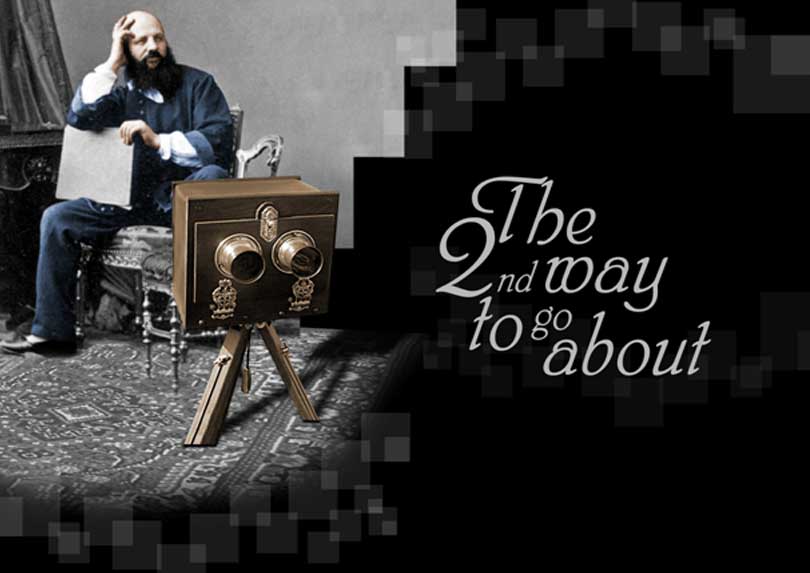
- After the SLR, 1870 saw the birth of a camera with two lenses called the Twin Lens Reflex (TLR) camera when Andre Adolphe Eugene Disderi got the idea to bypass the flaws of the SLR.
- By introducing an extra lens, he removed the loud sound and the vibration of the mirror. The photographer could simply place the viewfinder lens a little above the desired frame and click without any worry.
- But the extra eye had come for an expensive price and only the well-to-do could afford it.
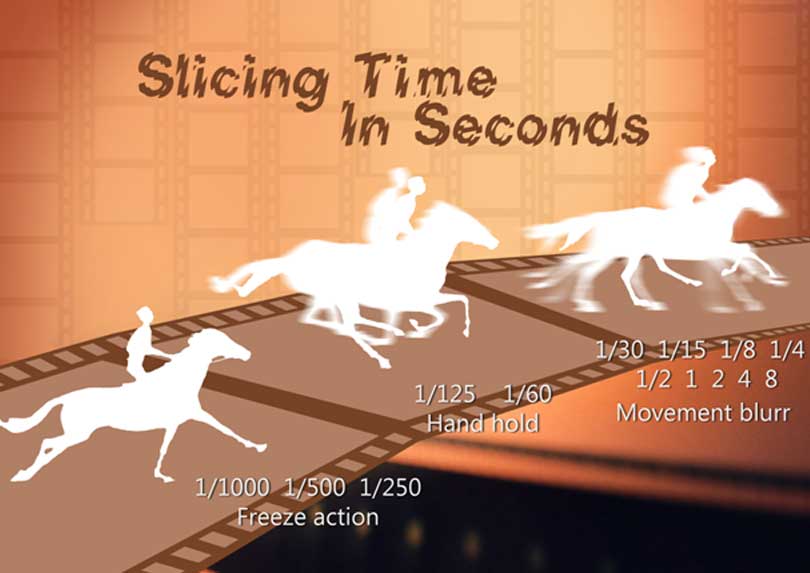
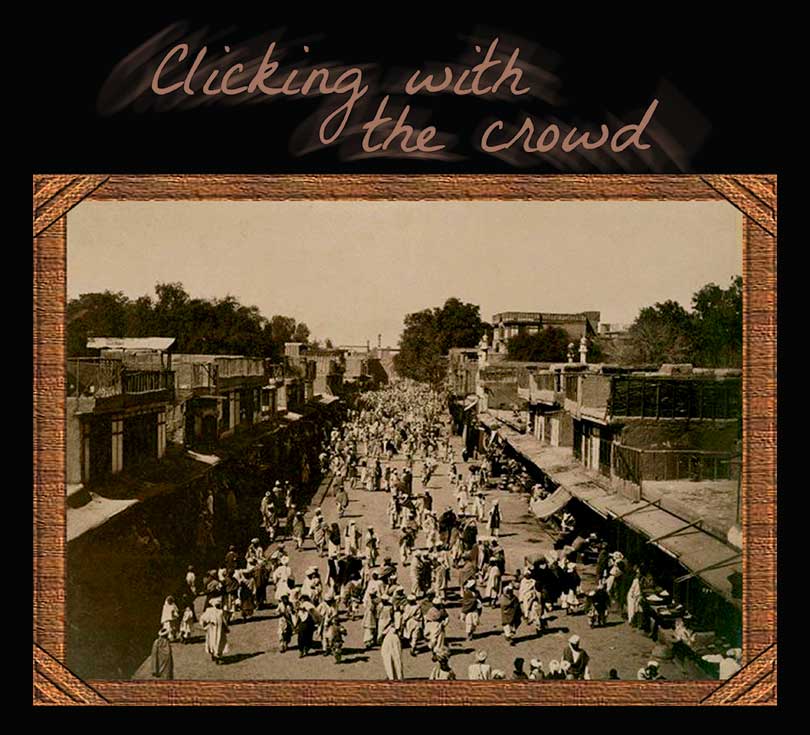
- In 1871, a new invention revolutionized photography and gave it a certain degree of freedom. Richard Leach Maddox created the gelatine dry plate (gelatine emulsion) after failing to find an appropriate substitute for the collodion wet plate.
- A British national, Charles Bennett, further improved the dry plate technique in 1873 and marketed it quite well. Soon, the dry plate found acceptance amongst amateur photographers across the continent.
- But its overseas business turned out to be an issue. The plates had to be imported into United States of America and the time it took for the plates to reach its destination rendered the plates ineffective.
- Another problem for traders was that these plates were treated as mere glass at the excise and the merchant often landed paying more than the plate’s cost.

- Many men tried to bypass this issue and the man to get it right was George Eastman. In 1878, George Eastman was one of the first to demonstrate the convenience of gelatine dry plates as these plates could be exposed and developed at the photographer's convenience unlike the time bound wet plates.
- Eastman knew that the only way to sell dry plates in America was to make them locally. So by the subsequent year he successfully invented a way to mass-produce photographic dry plates by constructing an emulsion-coating machine.
- Eastman rented a garret and began producing dry plates in New York while working as a bank clerk.
- On 18th January 1881, his business grew into a partnership with a family friend Henry A. Strong as they formed the Eastman Dry Plate Company. Six months later, Eastman quit his bank job and devoted himself completely to the endeavour.
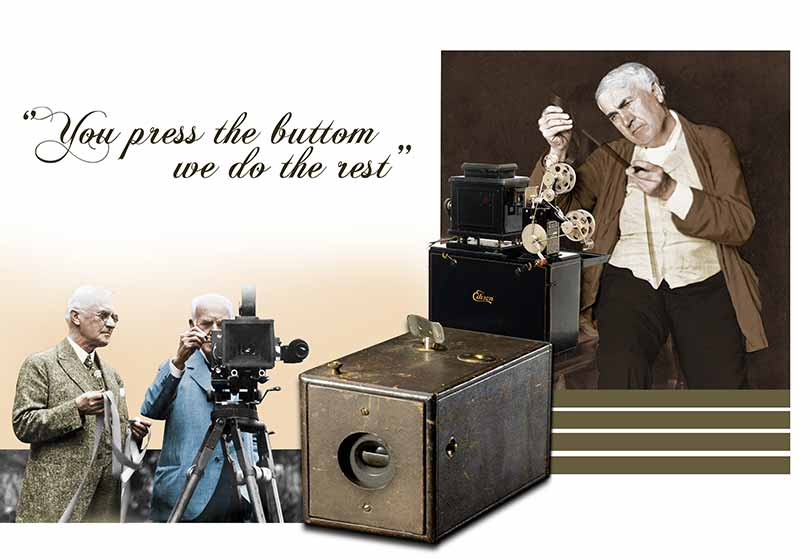
- Three years later, Eastman introduced a flexible negative paper and along with his associate William H. Walker, invented a roll holder for negative paper.
- But 1888 marked a new beginning as snap-shot photography was introduced with Eastman’s Kodak #1 camera; the slogan being "You press the button - we do the rest." And it was literarily so! The camera had a roll of about 100 film plates which changed automatically inside the camera after every click; and on exhaustion, the camera was to be sent back to the Kodak co. - which would process the images and give the photographer its negative as well as the positive print.

- European inventors were as a matter of fact on completely different grounds. An offbeat invention that would soon merge with commercial photography was the X-ray machine incepted by Wilhelm Rontgen in 1895, Germany.
- In France, a Frenchman named Louis Boutan got the idea of capturing underwater images after he witnessed the spellbinding beauty while scuba-diving. He was not content by sharing his experience in words and wanted people to see the scenic beauty.
- He started off with his brother, designing and making a camera that could work underwater by altering the diaphragm and shutter; whereas the plates used were made by the Lumiere Brothers. Boutan’s design also had a method of changing the buoyancy of the camera using an air balloon.
- The camera was fairly useable but the biggest problem Louis faced was inappropriate light due to diffusion and refraction created by the water. During these times flashes of light were made by burning magnesium and oxygen and since this wasn’t really possible underwater, Louis sought assistance from an electrical engineer - M. Chaffour.
- After a few errors, the two created a new flashlight using a rubber bulb that blew magnesium powder into a burning alcohol lamp. The working flash included a wooden barrel as a part of its mechanism which was problematic, but it gave the best result for the time.
- Meanwhile, the size of the camera progressively reduced until the camera was small enough to be brought under water by hand.
- Louis Boutan had recorded several images underwater by 1898 and continued to do so while making minor improvements here and there.
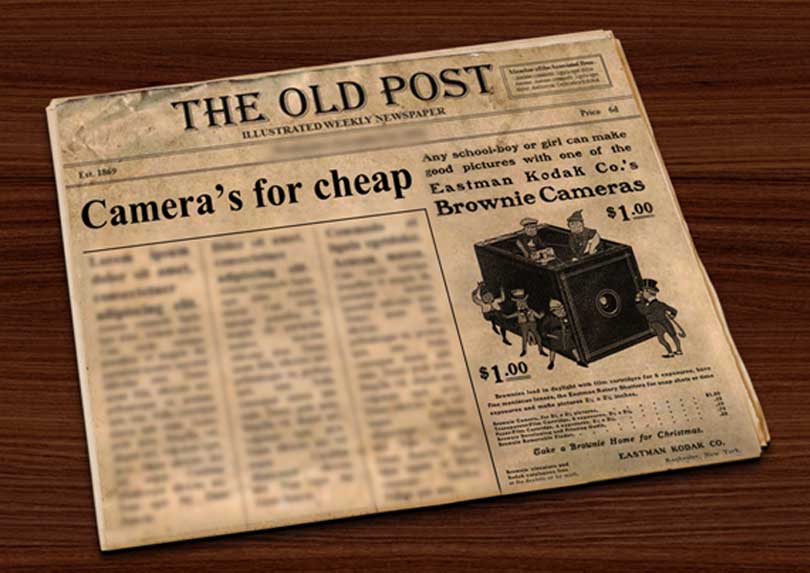
- The new century brought several improvements in the field of photography starting with a Brownie. Till now, cameras were ranged around $5 to 35$ in USA and similarly in Europe.
- With the introduction of the Brownie at a rock bottom price of $1, people would hardly need to think twice before buying a camera.
- The quality was worth the value and soon the camera grew to be the biggest hit in the market.
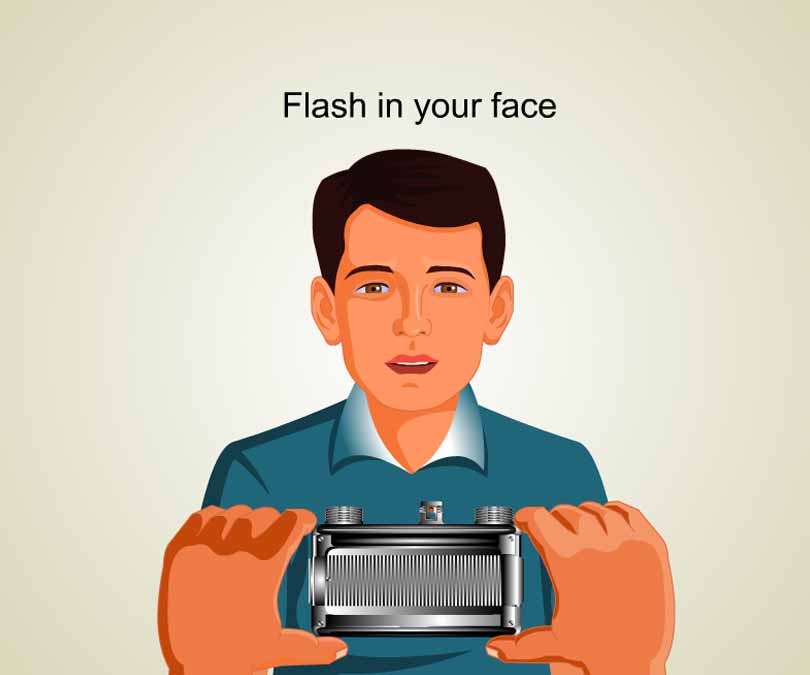
- Another sensation for the photographers in the 20th century was the improvement in flash technology. The flashes available previously like the magnesium wire would burn longer to give acceptable light for photographs.
- There is direct connection with the amount of light and the quality and clarity of a photograph. So, brighter the light, lesser time required for the image to imprint on the plate or film.
- So while the magnesium wire would burn for about a minute to produce enough light for the image to imprint, the person who is being photographed would be facing a very bright light right in the face. A wonderfully lit picture with your eyes closed is not exactly what you look forward to, is it?
- But now, with the introduction of the flash powder, the flash would burn only for about 10 seconds to give an excellent light. To face a bright light for a memorable picture was a lucrative proposal for the people.

- This remained popularly in use until the magnesium was electronically burnt as a foil in a bulb. This bulb produced a light that was powerful yet soft and diffused, making it a photographers’ best add-on.
- The idea was conceived by Paul Vierkötter but was put into production by the German Hauser Company in the 1930s. These were the earliest “flashbulbs”, the ones which could be used 3-5 times before “puff!”; they would break.
- The flash bulbs were also quite expensive, making it a professional’s tool. Against this, Harold E. Edgerton gave birth to the electronic flash in early 1930s. In comparison to the Flashbulbs these were far better as the electronic flashes used batteries which could be recharged.
- These were also more favourable as the intensity of the flash was adjustable according to the requirements.
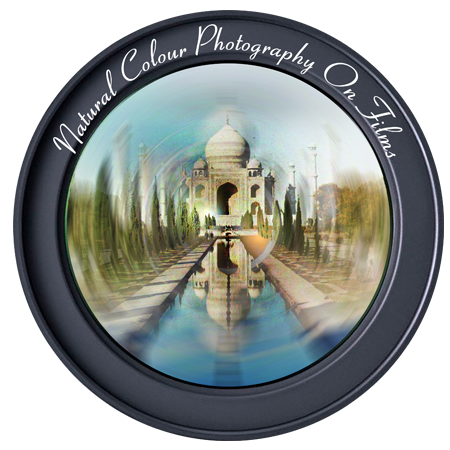
- The 20th century electrification of industries also reflected on the camera. It started with the conversion of a photograph into an electric signal that could be transmitted by wire to remote locations for viewing.
- This was called as telephotography and was used by police and media as evidence soon after it was invented by Arthur Korn in 1906.
- A year later, French photographers also got the medium of colour to express themselves in their art as Autochrome Lumiere was marketed. Don’t get the idea that Autochrome was a colour film/plate. It was just a filter but it enabled photographers to capture actual colours of the scene in a single click, which till then was only a dream.
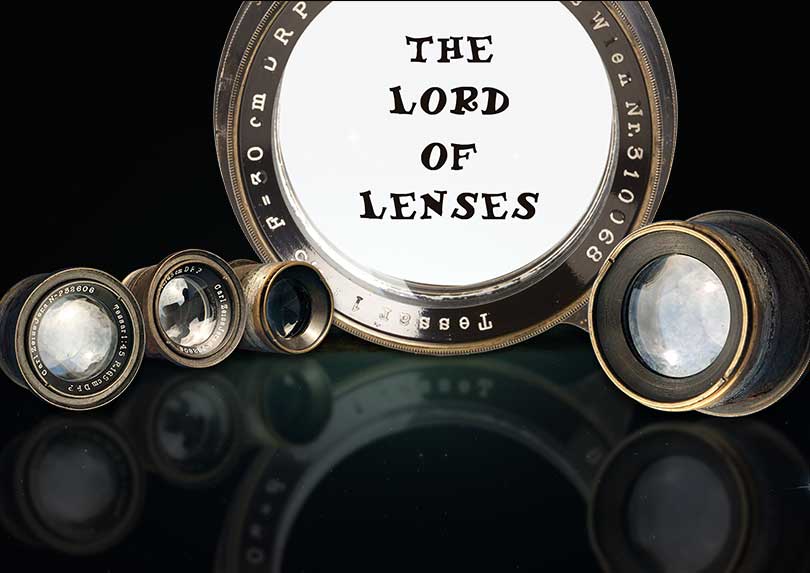
- After the two temporarily colourful inventions, a bit more substantial set of inventions followed.
- An eminent microscope maker named Carl Zeiss had realized that the method used to invent better lenses was futile. People would spend a lot of time, money and effort to create a different shaped lens just to find its unfeasibility by the end.
- Carl, along with German optometrist and physicist Ernest Abbe, made astounding improvement in lenses after figuring out that a sound theory of light and refraction was the way to go about it.
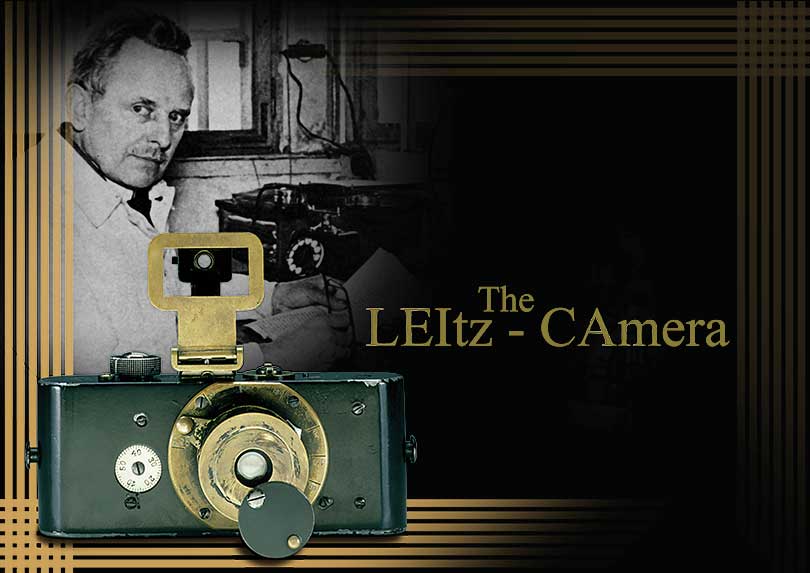
- Meanwhile, another microscope researcher shifted his entire focus onto photography and his zeal resulted in a 35mm movie camera. Oskar Barnack was the lead developer for the camera company Leitz, and it was because of him that the world’s first flawless 35mm camera was constructed in 1913; the LEICA (LEItz – CAmera).
- Plans were set to mass-produce the camera in 1914 but the production was stalled since the country was at war. As the war went on, Oskar scrutinized the mechanism and found a few ways to further improve this flawless camera, but when the war ceased in 1919, the heavy tax levied onto Germany restricted Leitz from putting the LEICA into production until 1924.
- The camera’s popularity quickly picked up and the company’s gamble paid off. The reason was that, earlier existing 35mm cameras were heavy and big, which Oskar found difficult to carry. This led to the design of a lighter, smaller and more compact camera.
- In spite of the success, times were difficult throughout Europe as most nations entered an economic crisis and businesses struggled to survive. But on the positive side, the war had served as a bridge between the western countries and Japan. This enabled the Japanese to learn and take home the technology of photography.
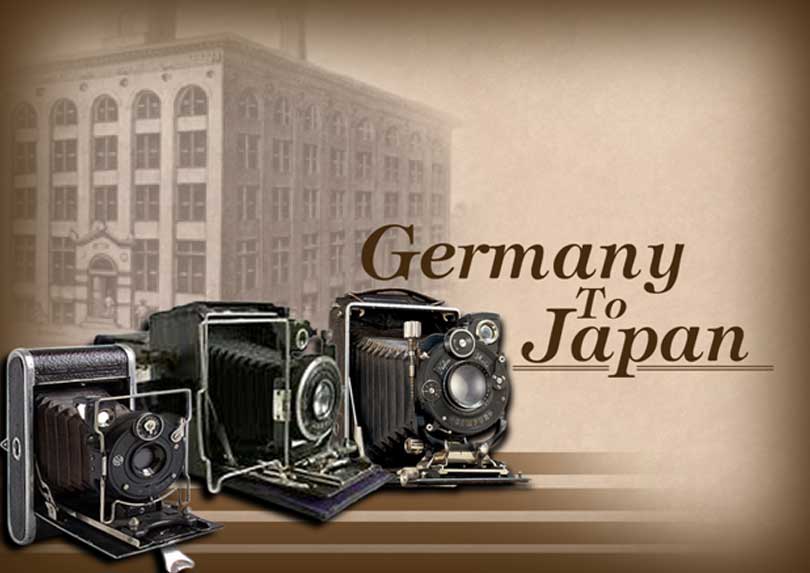
- In 1928, a Japanese entrepreneur Kazuo Tashima started the first Japanese camera company – Nichi-Doku Shashinki Shōten (Japanese-German Photo Company) with the help of German engineers. The Company marketed its first camera Nifcarette in 1929, followed by Nifcaklapp and Nifcasport folding cameras.
- Folding cameras were like a box containing a lens. One of its sides would open and the lens would slide out after which it pretty much operated like a normal camera. The cameras by then had improved bellows, a black cross-box-like cover that would enable adjusting the lens at greater distance from the plates/film with ease and precision.
- Following the success of Nichidoku Shashinki Shōten, within a few years, Japan saw several other companies that entered the market with their cameras, one of which was by the Germans, Billy Neumann and Willy Heilemann.
- Whereas in Germany, Johannes Ostermeier introduced the first commercially available Flashbulbs on 23rd September, 1930. The flash was followed in 1932 by a light meter with photoelectric cells that measured exactly how much light was falling on the subject.
- Eastman introduced his Kodachrome in 1935 - the first successful colour film to be used. This was followed by the world’s first completely coloured feature film - Becky Sharp’s release in America. On the other side of the world, a few Japanese companies’ like Konica and Fuji had started making and selling X-ray films and X-ray cameras apart from the regular array of products.
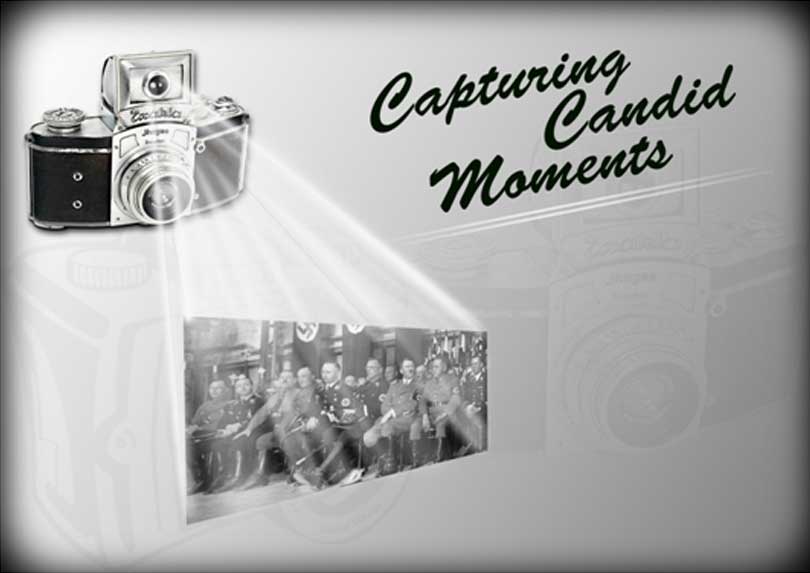
- By now the camera had become a common tool and its applications were found in almost all the fields. As an invention it had evolved by the efforts of many innovators from a simple set of boxes to a complicated tool of image recording to yet again a simple box with a complex system concealed inside.
- As wonderful as it may sound, the journey of the invention was still continued as its most apex phase arrived in the 1930s. At the time, Germany was governed by the Nazis, who gave immense importance to innovations. They acted as catalysts and prompted people in every field and stature to bring out the best they could.
- The results… A camera company called Ihagee Kamerawerk introduced the world’s first modern 35mm SLR camera named Kine Exakta in 1936.
- It incorporated outstanding features which the company had invented in 1935; like a built-in flash socket which was rigged with the shutter. It had a waist-level view finder which facilitated discreet candid photography and the shutter button in front instead of top allowing easy handling.
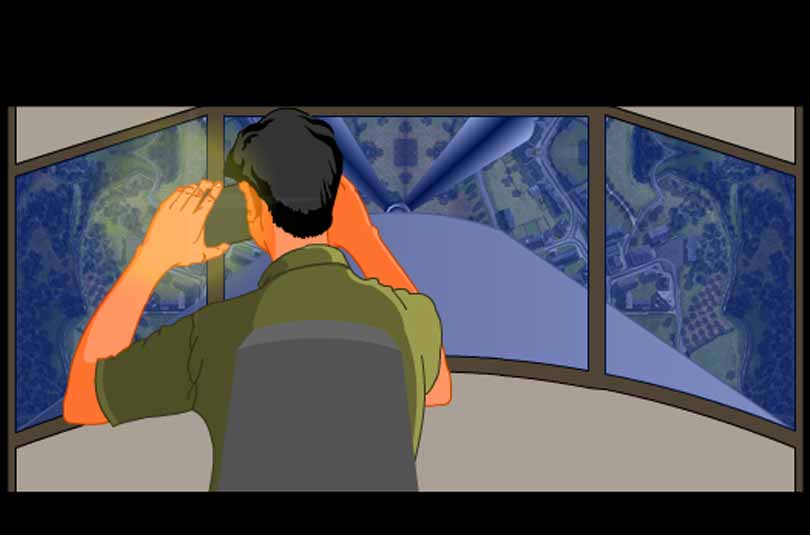
- Then came the Second World War and most technological developments in Europe stalled… but U.S.A. was far from the fight and continued to see many improvements. In 1941, Eastman Kodak marketed their Kodacolor negative film and a year later, Chester Carlson patented electric photography.
- While in Germany, ultra-fast Leica cameras were extensively used by the Luftwaffe (Nazi Airforce) for the earliest aerial photography during raids and also for collecting information. Similar cameras were used by France and United Kingdom later on.
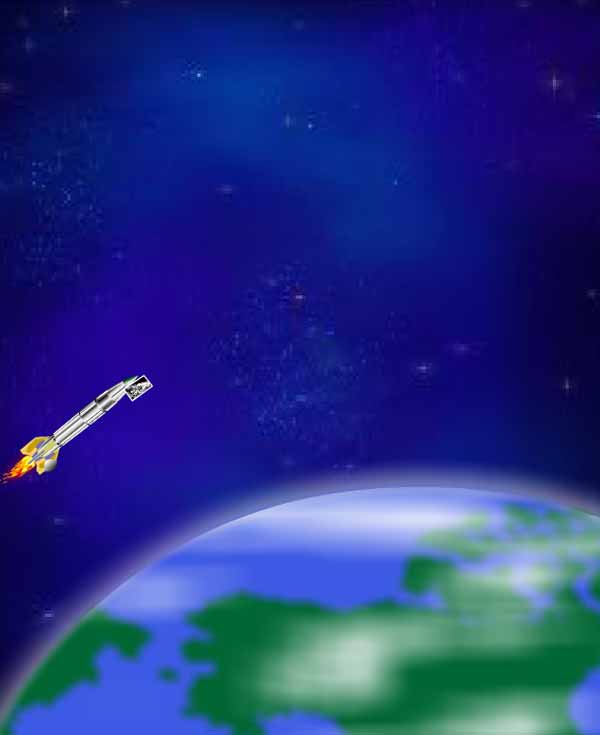
- Meanwhile, a German scientist fixed a 35-millimeter motion picture camera onto a defused V-2 missile to record the height of its flight and launched the V-2 perpendicularly. The camera aboard the missile clicked twice in 3 minutes while the missile made its trip.
- Although the camera was shattered to dust on impact of the missile’s return to earth, the film was safe in a specially devised steel cassette.
- On its recovery, the scientists were awed to see the sight of grainy black and white pictures of Earth from outer space. THIS was the first time Earth was photographed from outer space.
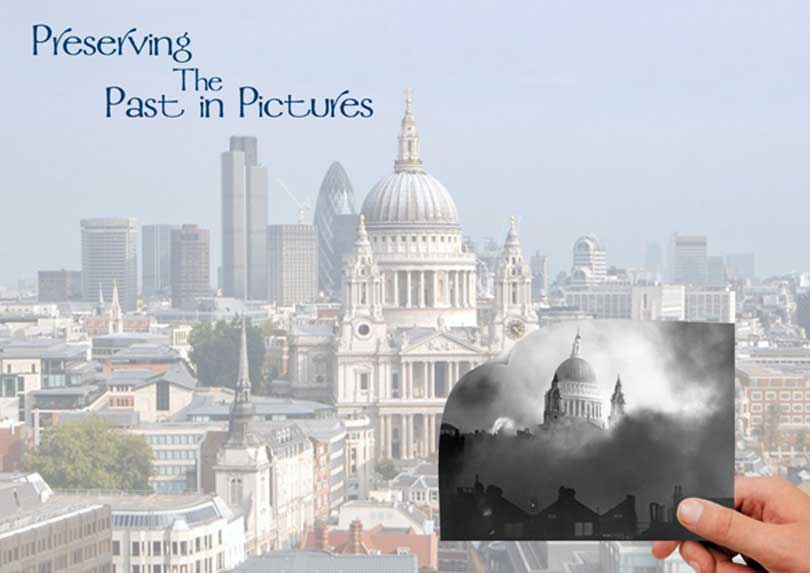
- In spite of the fact that photography was banned in nations participating in the war, by 1945 there were plenty photographs taken by various individuals throughout the continents and it is because of these photographs that we can see the truth of the war without any bias. The photographs also narrate the untold stories of people during war, like this picture of a lady burning bundles money in the furnace to stay warm and alive.
- By the end of World War 2, most countries had developed comprehensive technologies for military applications and had also improved on existing ones; the accounts of which are difficult to incorporate. In Europe, Germany had far outperformed other nations in the field of photography. They had introduced several new features for varied applications.
- Like the Leica was modified to take infrared images of terrains enabling a better surveillance as the information that is not visible through optical cameras is highlighted through such photography. The technique was already used by astronomers prior to the war; the Luftwaffe had only introduced its alternate application.
Note: The inventions and the inventors’ names stated henceforth are as per known public knowledge and not personal opinion. It is important to mention this due to the outcome of Operation Paperclip.

- Such mix and match recipes gave birth to several types of cameras in the years that followed as well. But the most exciting technique introduced soon after the war was Dennis Gabor’s HOLOGRAPHY.
- In late 1940s, the Hungarian-British physicist accidentally invented a device that enabled three-dimensional (3D) view of an object by interlacing two or three photographs of the same subject from different viewpoints. Photographs of this technique are commonly referred to as Holograms.
- Another sensational development was the construction of a Rapatronic camera in 1947. Harold Edgerton created this camera for the U.S. govt. to analyse the effects of nuclear explosion for which they needed an extremely high-speed camera.
- Rapatronic was the result of this effort as it could capture well-detailed images in a mere 10 miliseconds, making it a camera that can click 100,000,000 frames every second.
- But this camera was only useful in photographing exploding bombs as the amount of light required by the camera to capture its subject was derived only by explosions. The camera could only capture luminance resulting in black and white photographs.
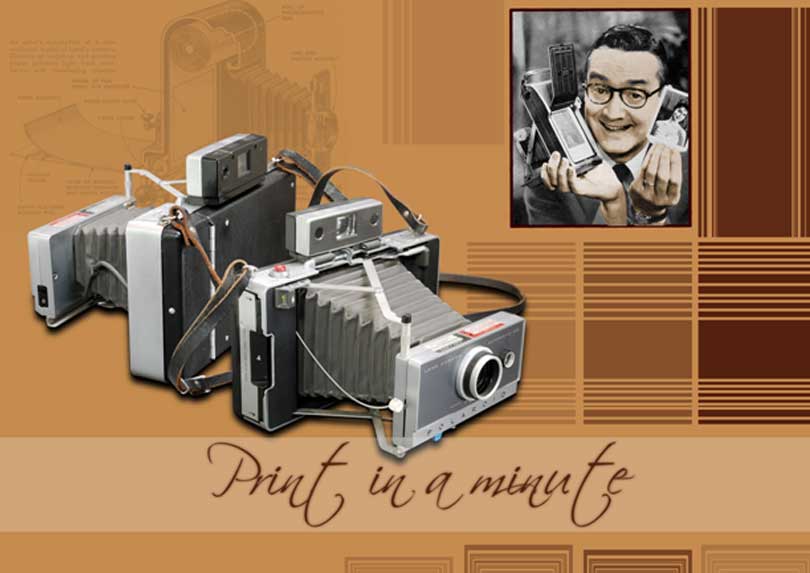
- As for the people, the American company Polaroid introduced their new camera with the luxury of instant image processing. The Land Camera was a camera developed by Edwin Land in the late 1940s and was a milestone in photography as it removed all the complications of processing an image after clicking it.
- An average camera was advanced enough to be used by a child as the user need not necessarily know anything about the camera. All that the user required to do was to start it, set the frame using the viewfinder, press a button to capture the image, scroll the roll by turning a wheel and once the film roll was completely used… give it to a studio for processing and collect the set of photograph prints and the original negative film roll after a given div of time. Phew!
- Now imagine the delight of a photographer who could see the image he clicked seconds after he clicked it. They went berserk! The Polaroid instant image cameras became a popular hit within no time.
- At the time U.S.A also witnessed the power of digital computation as computers were developed at a rapid pace. Russel Kirsch and his team made history as they created the world’s first digital photograph using a device called Drum scanner (prototype scanner). The team had constructed the device in mid-nineteen-fifties and revealed it in 1957.
- Surprisingly the first image that was scanned by the new-born technique was a photograph of an infant. The invention gave way to an array of devices that made it possible to store soft copies of photographs.
- If by chance the question “What is SO great about that?” pops in anyone’s mind then you can tell them that the photographs of that time were of paper and similar material which would rot and decompose over a period of time. Now, even if the resolution (quality) of the scanned image was not all that great, at least it will survive much longer than a hard copy. Something is better than nothing right!
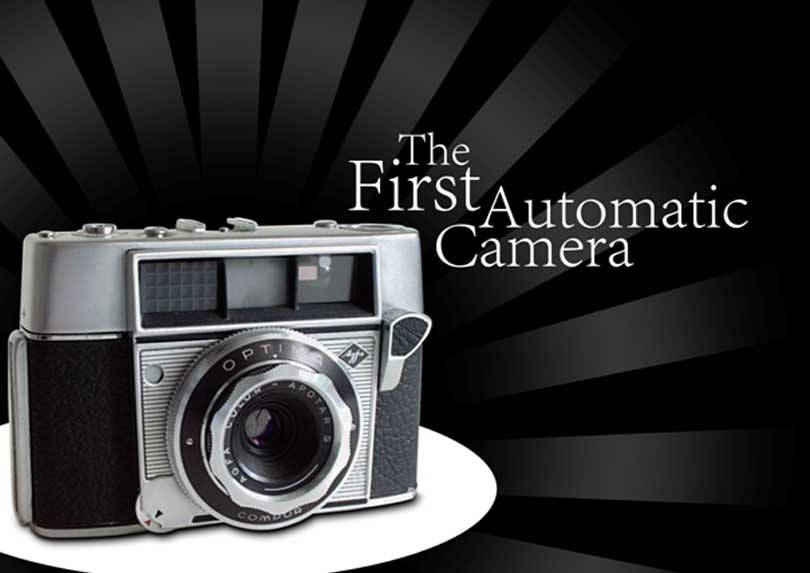
- In the following decade, Polaroid and scanners improved and people loved the ease of it. To add to their joy, the German AGFA camera company introduced the world’s first fully automatic camera – the OPTIMA series, starting from 1959.
- It was like the film cameras we get today but with some features of a digital camera like auto focusing and value displays. It even told the user if the light wasn’t perfect or the settings were set wrong, simply by half-clicking the shutter button.
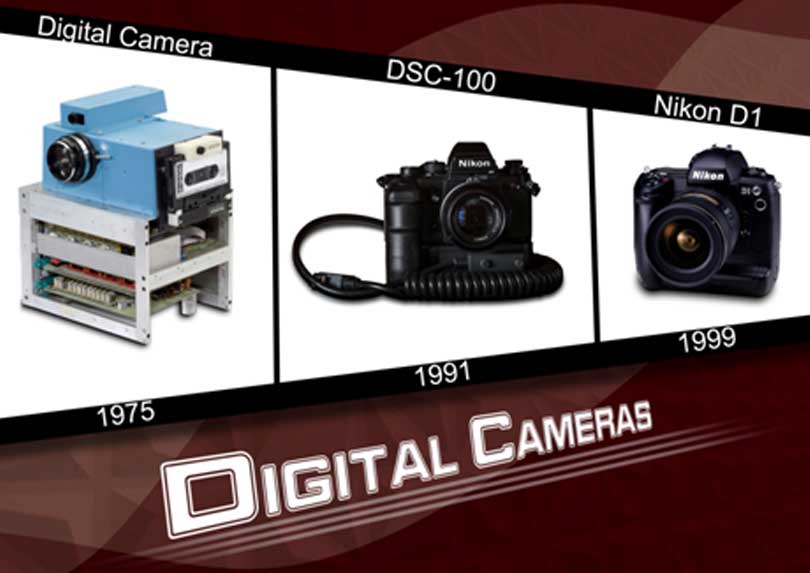
- What followed this in progression was the arrival of Digital cameras. The first partly digital camera was introduced by Kodak’s Steven Sasson in 1975.
- This was followed by the first consumer camera available in the market in 1991 - the Kodak DSC-100. The Size and shape was improved by Nikon in 1999 with a decently efficient Nikon D1. This was the first true DSLR camera in the world and looked much similar to the ones we see around us.
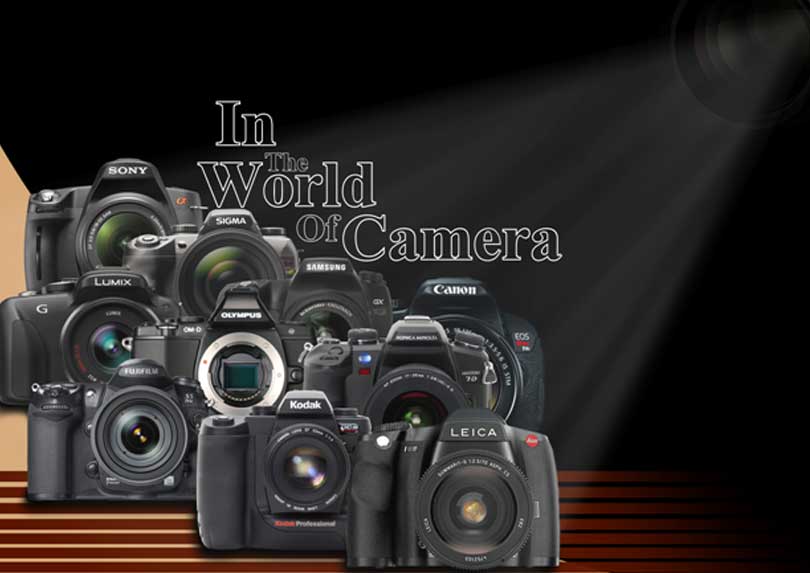
- Once the basic structure was introduced for a DSLR, companies like Canon, Leica, Kodak, Fujifilm, Minolta, Olympus, Panasonic, Hasselblad, Samsung, Sigma and even Sony released their own DSLR products.
- The initial DSLR’s were only equipped with the basic CCD sensor and performed the normal functions of focusing, flash and taking pictures.
- As more effort was put in by several companies, the DSLR transformed into what we use today – A highly capable tool to freeze time in its tracks and with the help of a few processes; even rectify the mistakes that are captured. Is this not altering history in a sense?

- Technology has advanced at accelerated rates over these years and the camera has found its applications in almost all fields of life, be it scientific research in the deep ocean or space or be it capturing a moment at extremely slow speed. Today there exists a technology which enabled an inventor named Ramesh Raskar to make a camera that can capture images at such high speed that photos can be seen travelling at a trillionth fraction of a second. The technique is expected to aid product scanning and help reduce flaws.
- On the other hand we have cameras that are used to peek into places which are otherwise inaccessible to us like our own human body. There are ultra-small cameras that are inserted into a body via any opening and reach the area of quest and enable doctors to detect the root cause of problems.
- The camera has evolved greatly over time. Recent updates as per 2013 mention that now the camera can not only click, edit, share pictures instantly via wireless connections with printers and computers, but can also have an enlarged display of its display screen when connected to any normal laptop or similar device. You can imagine what all comes in-between but to mention the least, from a room sized camera-obscura to two cameras in a mobile phone - each equal to any ‘point and shoot’ camera is definitely a big achievement!